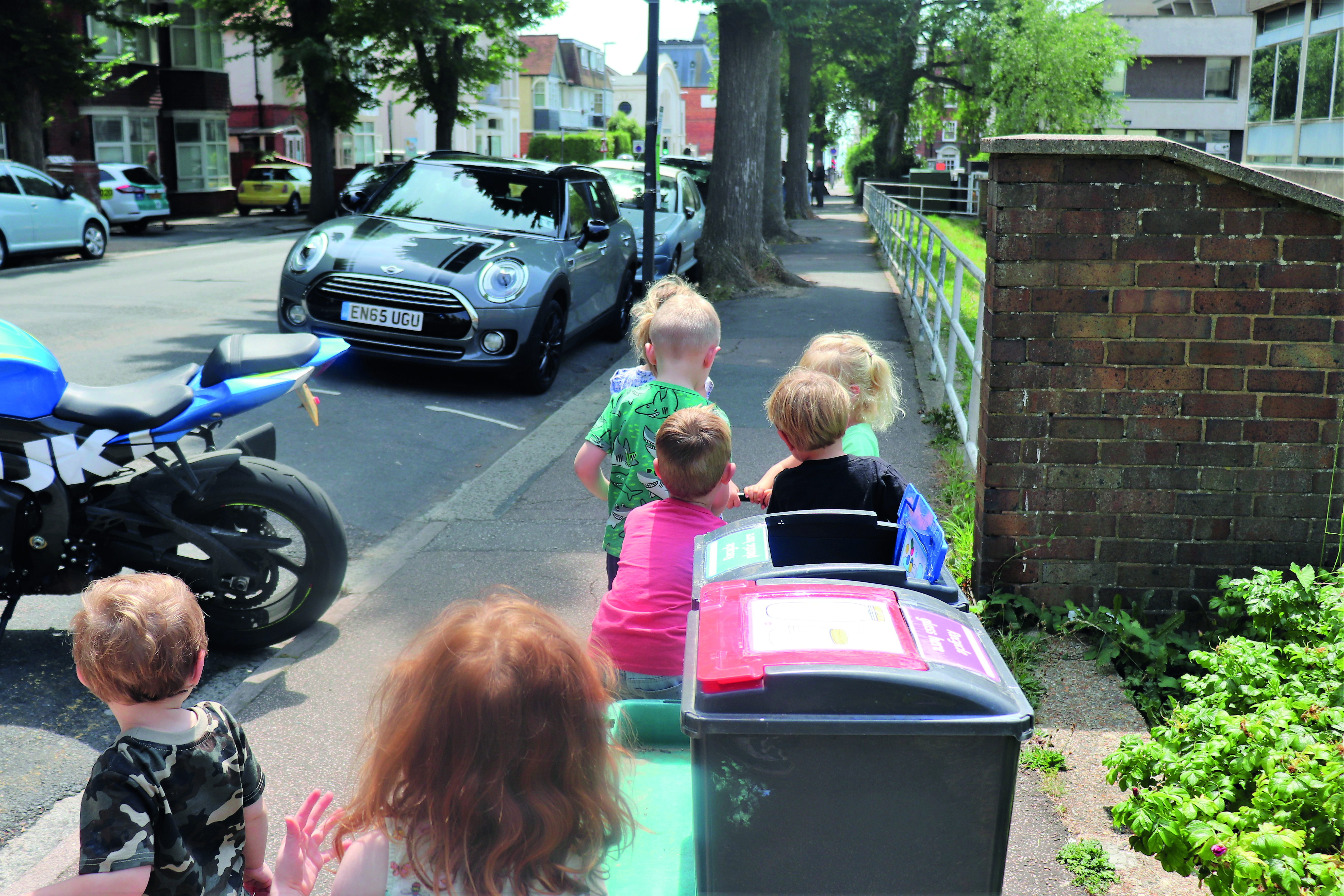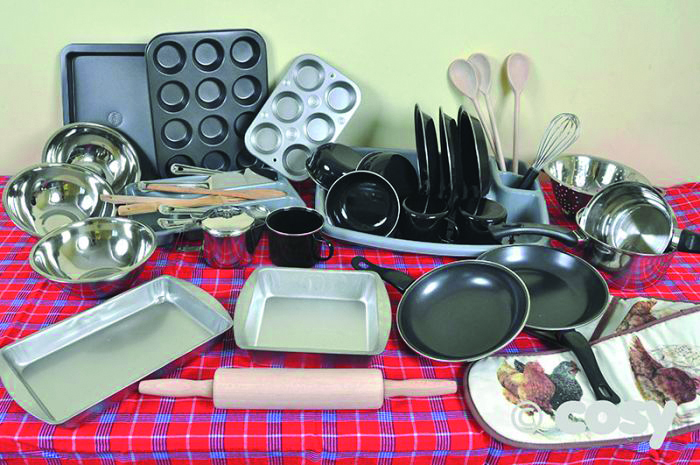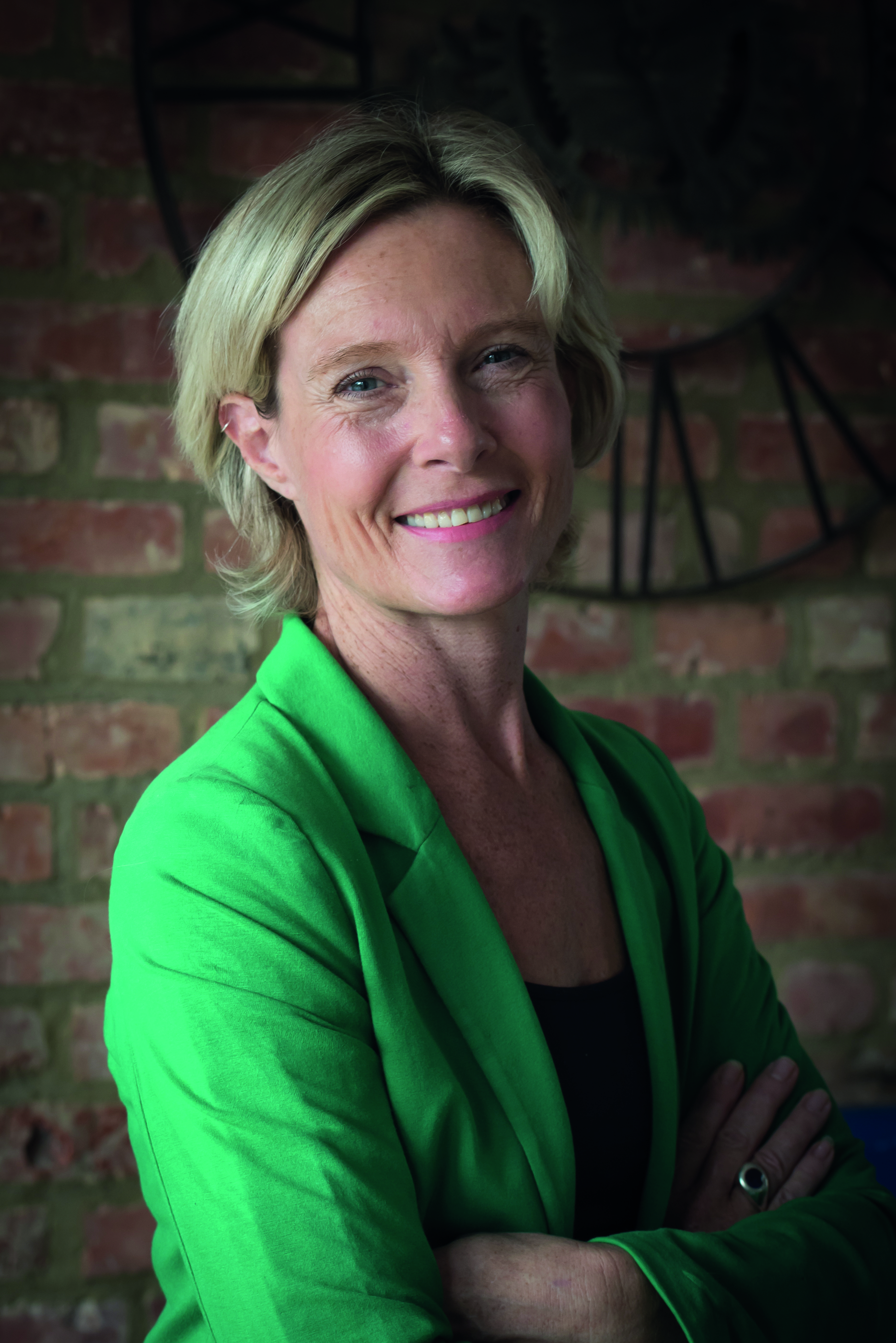
Language is key to building children’s knowledge of the world around them. By exploring, observing and finding out about people, places and the environment, children can begin to make sense of their physical world and their community.
Practitioners can start by exploring children’s developing sense of identity and what’s familiar to them and then expand children’s vocabulary around what they know and experience.
For example, taking them out for walks or bus rides in the local community – to the park, shops, places of work or local community buildings – and recreating real-life experiences through role play or small-world play back at the setting.
Listening to a broad selection of stories, rhymes, non-fiction and poems will foster their understanding of the culturally diverse world we live in, while enriching their vocabulary.
FIRST-HAND EXPERIENCES

‘Start with the family and what the children know,’ explains Ann Langston, director of consultancy Early Years Matters, which provides in-house support to schools and settings.
‘Through hearing stories and seeing pictures and objects which have meaning for them and their families and encouraging them to connect their own lives with those of other families and community members, children begin to develop a sense of time as they connect past and present events and with people and places.’
Here are some activities and useful resources:
- Talk about family members. Draw a picture of the family home and draw a circle around it, adding in the names of people the child shares their home with, including pets. Ask the children about other important people in their life who don’t share their home and add them to an outer circle beyond the home. Staff could then help children think about people who work in the setting and finally people beyond the setting, such as the crossing warden. Some of these could be drawn or photographed by the children and a display or book could be made to help them recall and remember.
- Encourage children to talk about their personal experiences in the world around them by inviting parents to upload to a safe space holiday pictures or pictures of special events, and use these to make picture books for the children to enjoy.
- Take them on a trip to the shops and help them to set up their own when they get back. Identify vocabulary to support their play, such as: ‘checkout’; ‘supermarket’; ‘shop’; ‘till’; ‘money’; ‘purse’; ‘cash’; ‘card’; ‘coupons’.
- Gather pictures of common logos such as McDonald’s, Asda, Aldi and Tesco, and make an interactive display with pictures of the children to show who has ever been in one of the shops.
- Send home a camera and ask families to take pictures of things they do, such as watching TV, making food, hanging out washing and feeding the family pet.
EXPLORING DIFFERENCE

It is important for children to learn about other ways of life, accept diversity and recognise that differences enrich people’s lives.
One way to do this is to invite parents to the setting to share information about their homes, families, cultures and traditions – or perhaps even to share cooking and food preparation techniques. Look at the places their families originated from on world maps and globes.
When it comes to understanding similarities and differences that are personal to them, Ms Langston says, ‘Talk with children about what they can do now – such as walk, run, feed themselves – and compare this to what a baby can do. Compare things such as the sizes of shoes, hands, feet, clothes, and the length of a bed with a cot.’
Ideas for discussing similarities and differences
- Discussions about where the children live – in a house, a bungalow, a flat or a maisonette – or if they have a garden or balcony will give children a deeper understanding of the similarities and differences in the homes where we live.
- Talk about the differences in living in the town and the country. This can involve discussion about farms and animals and high-rise buildings and businesses.
- A ‘holiday bear’ which goes on weekend trips to the country or trips to visit relatives abroad is a good opportunity to talk about the different ways of life and traditions of others. Encourage families to take photographs and write postcards which can be shared back in the nursery.
- Focus on children’s interests when planning the curriculum so children can begin to make connections. If a child is interested in a family celebration – for example, a birthday or a wedding – practitioners can seize the moment and provide enhancements in the areas. If children have just celebrated a birthday, practitioners can put wrapping paper, gifts and sticky tape in the creative area and encourage this line of enquiry where they wrap gifts. In the home corner, party food and cakes, not necessarily real, can be provided.
- Ensure there are plenty of books about particular events, such as babies, pets and birthdays. It is about connecting with who they are and contributing to the children’s sense of identity and giving them a narrative to describe their experiences. Stories such as Elmer and Giraffes Can’t Dance are great for celebrating differences.
CASE STUDY: sustainability
 Young Friends Nursery in East Sussex has an impressive knowledge of recycling, how to make compost and the perils of plastic to the environment.
Young Friends Nursery in East Sussex has an impressive knowledge of recycling, how to make compost and the perils of plastic to the environment.
With regular visits to the coastline for ‘beach cleans’ and daily trips to the allotments, the setting’s nature-based curriculum ensures that sustainability is part of everyday living.
Nicole, mum of Ben*, aged four, says, ‘The beach cleans promote links with the local community, with which he feels connected. He has a deep understanding of the environment and how to care for it, and this has contributed to high levels of self-esteem and confidence.’
CEO Louise Lloyd-Evans says, ‘We have a family recycling drop-off point for items that can’t go in kerb-side bins, and our children take them to depots in our mini bus. Each day, they sort the nursery recycling into three boxes – for glass, tins and paper. When they are full, they take them outside and flatten the cardboard and put them into the garden outdoor recycling bins.
‘Once a day, we load these bins onto the nursery wagon and trundle off down the road to the community recycling plant, where we empty it. The children love being part of this.
‘We’ve noticed that their language skills and critical thinking have gone through the roof. With the sorting and categorising of recycling materials, children use this in other areas of their learning. For example, in the garden they don’t just sort twigs into size order but they categorise them by the number of ridges or bumps they have.
‘One child told his parents that he didn’t want balloons because of the effect of plastic in the ocean. He said he wanted to save the fish.
‘Children also take on extra responsibilities when it comes to environmental issues. For example, being part of an eco-committee which, among other things, switches off the nursery power to save energy every afternoon. They grow with a desire to nurture an array of creatures, wild and domestic, from the wildlife at the plot to daily brushing, feeding and bathing our five rabbits and guinea pigs and our gentle nursery Labrador.’
The ocean and nature projects, going plastic free, using cloth nappies and much more all support the nursery’s ethos.
- SNAP – Sustainable Nurseries Against Plastic, https://bit.ly/2XFze5m
- Visit https://youngfriends.co.uk for more information.
*Name has been changed
RESOURCES
- Real-life role play: Pound Shop Homecorner, https://www.cosydirect.com/catalogsearch/result/?q=24880
- Crate Kitchen Set, https://www.cosydirect.com/crate-kitchen-set.html
- Mini Grab and Go Exploring Nature Outdoor Kitchen, https://bit.ly/3clX4r1
- Minibeast Scene Kit (Butterflies), https://www.yellow-door.net/products/marvellous-minibeasts/
- Early Excellence Going Home Bags – Popular Characters, https://bit.ly/3g2Ggb4
PROFESSIONAL BOOKS
Facilitating Children’s Learning in the EYFS (OU Press, 2014) by Ann Langston (with a chapter dedicated to People and Community)
MORE INFORMATION
Ann Langston’s company, Early Years Matters, www.earlyyearsmatters.co.uk









